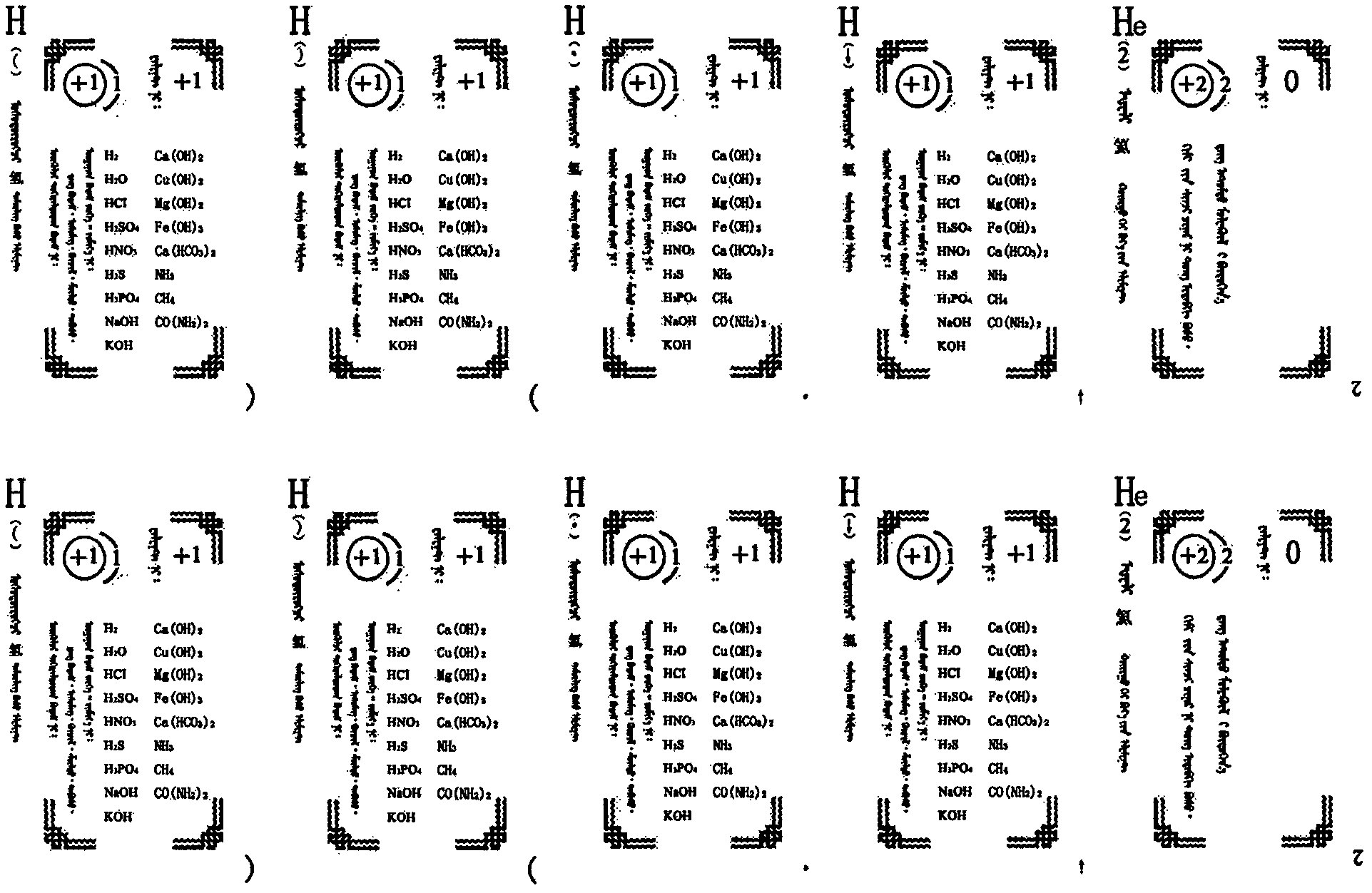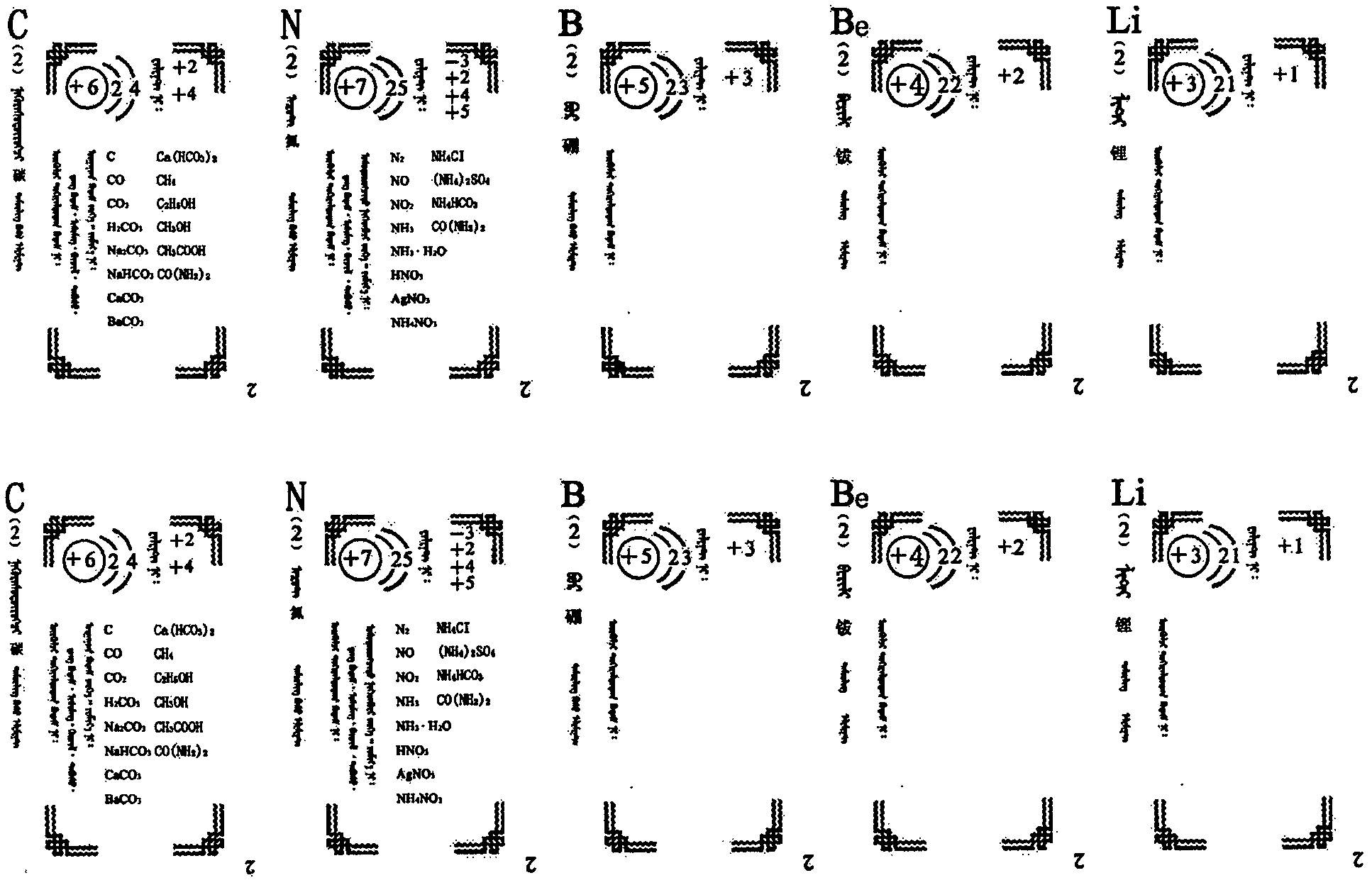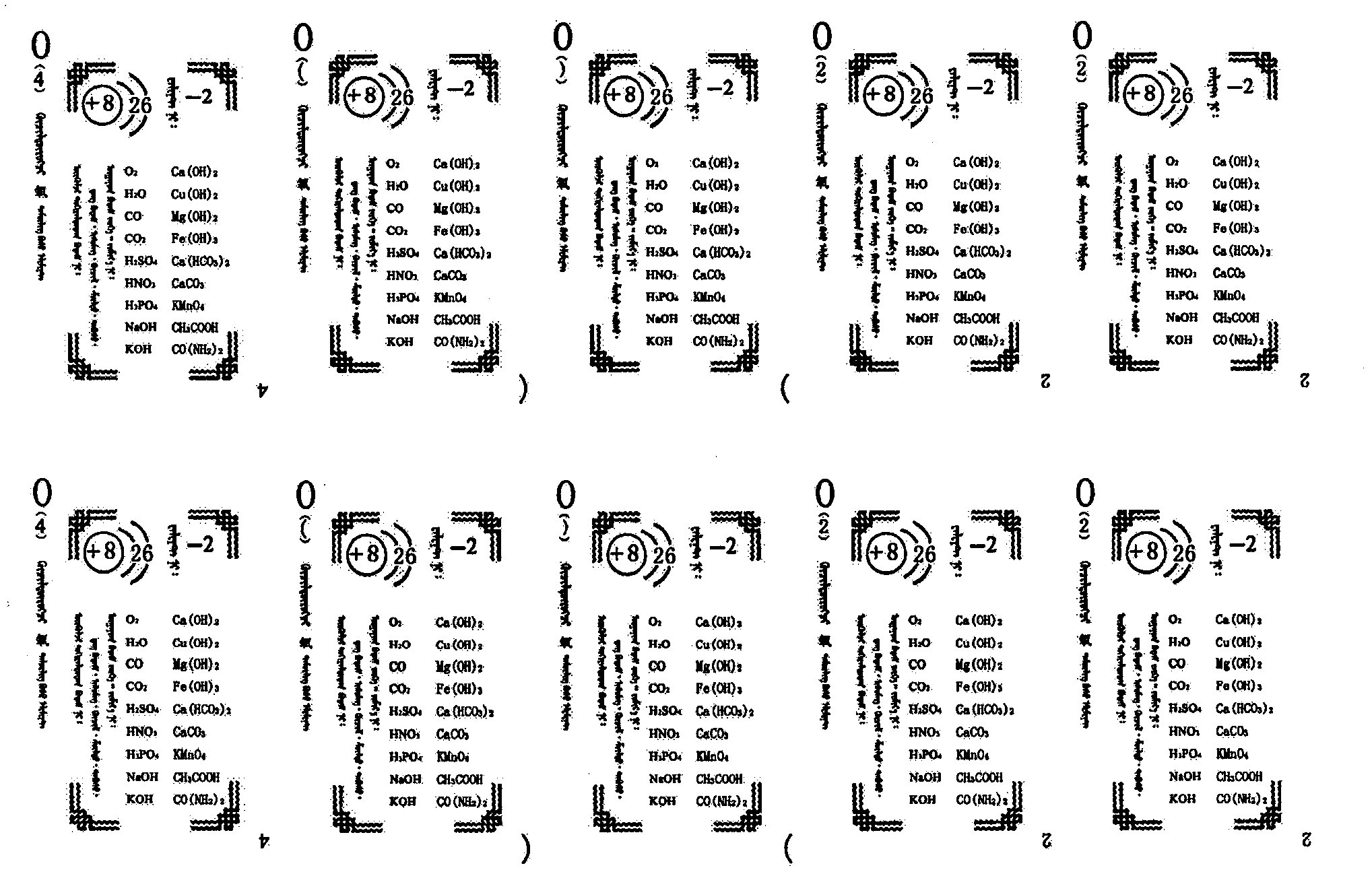Chemical element playing cards
A technology of chemical elements and playing cards, which is applied in the field of educational equipment, can solve the problems of students' learning difficulties and failures, and achieve the effect of consolidating the knowledge learned, increasing interest and enthusiasm
- Summary
- Abstract
- Description
- Claims
- Application Information
AI Technical Summary
Problems solved by technology
Method used
Image
Examples
Embodiment 1
[0015] Embodiment 1 playing cards form:
[0016] A chemical element playing card for learning and consolidating chemical knowledge in the game. The chemical element playing cards fully embodies the smallest particles of atoms in chemical changes, and also intuitively expresses that the essence of chemical reactions is the rearrangement and reorganization of atoms, and embodies some microscopic particles such as atoms.
[0017] There are 80 cards in the chemical element playing cards. The front of each card is composed of atoms of common chemical elements in middle school chemistry, involving more than 20 common chemical elements. The back of each playing card is a picture of chemical experiment equipment commonly used in middle school , is for students to understand and be familiar with commonly used chemical instruments.
[0018] The upper left corner of the front of each card is the atomic symbol of various elements, the content in the parentheses below the atomic symbol is...
Embodiment 2
[0024] Embodiment 2: How to play:
[0025] Can be played by one player, such as a game of poker, or by two or more players, such as scramble for the top.
[0026] The playing method is similar to that of ordinary poker. It can form a chemical formula or a chemical equation, and can also form a chain of cards (for example: three or more cards with increasing proton numbers), a pair (two atoms with the same front face) cards), killing (cards with the same three atoms on the front of the card), positive killing (cards with the same four atoms on the front of the card), and the characteristics of atoms or substances to play (for example: in the core of the earth The largest content is O, followed by Si, and the third is Al), and you can also customize the gameplay according to the valence, electronic layer structure, metallicity, non-metallicity, activity, etc.
[0027] First provide a card game rule:
[0028] The main principle is that a chemical formula must be formed (the act...
PUM
 Login to View More
Login to View More Abstract
Description
Claims
Application Information
 Login to View More
Login to View More - R&D
- Intellectual Property
- Life Sciences
- Materials
- Tech Scout
- Unparalleled Data Quality
- Higher Quality Content
- 60% Fewer Hallucinations
Browse by: Latest US Patents, China's latest patents, Technical Efficacy Thesaurus, Application Domain, Technology Topic, Popular Technical Reports.
© 2025 PatSnap. All rights reserved.Legal|Privacy policy|Modern Slavery Act Transparency Statement|Sitemap|About US| Contact US: help@patsnap.com



